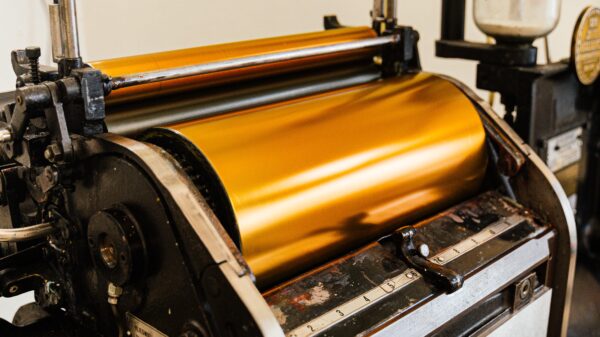
Welcome to the future! 3D printing has taken the world by storm, revolutionizing industries and unlocking a whole new realm of possibilities. Gone are the days when we could only imagine what was possible – now, with just a click of a button, we can bring our wildest visions to life. From creating intricate prototypes to building houses in hours, this technology is reshaping practical applications as we know them. In this blog post, join us as we delve into the fascinating world of 3D printing and explore how it is changing the game in ways you never thought possible. Prepare to be amazed at what this groundbreaking technology can achieve!
Introduction to 3D Printing Practical Applications
Three-dimensional printing, also known as additive manufacturing, is a process of making a three-dimensional object from a digital file. The creation of a 3D printed object is achieved using additive processes. In an additive process an object is created by successively adding material layer by layer until the entire object is created. Each of these layers can be seen as a thinly sliced horizontal cross-section of the eventual object.
3D printing is the opposite of subtrractive manufacturing which is common in traditional machining where drilling and milling remove material to create an object.
Benefits of 3D Printing
Thanks to advances in technology, 3D printing is now more accessible and affordable than ever before. This revolutionary technology has the potential to change the way we manufacture and design products, as well as how we provide healthcare and education.
Some of the benefits of 3D printing include:
1. Increased accuracy: With traditional manufacturing methods, it can be difficult to achieve precise results. 3D printing offers a level of accuracy that is not possible with other methods.
2. Greater flexibility: 3D printing gives you the ability to create complex shapes and designs that would not be possible with other methods. This means that you can create custom products that are perfectly suited to your needs.
3. Lower costs: Because 3D printing doesn’t require expensive tooling or molds, it can be a very cost-effective way to produce items in small quantities. This makes it a great option for prototyping or for producing limited-edition products.
4. Faster production: With traditional manufacturing methods, it can take weeks or even months to produce a product. With 3D printing, you can reduce production time from weeks to days or even hours.
5. Reduced waste: With traditional manufacturing methods, a lot of material is wasted as it is cut or molded into the desired shape. With 3D printing, only the amount of material needed for the final product is used, so there is less waste overall.
Applications of 3D Printing in Everyday Life
From eyeglasses to medical implants, 3D printing is being used in more and more industries to create customized products. This technology has the potential to change the way we manufacture and consume goods, making it more efficient and environmentally friendly.
Here are some of the ways 3D printing is being used in everyday life:
1. Medical implants: 3D printing is being used to create custom medical implants, such as hip replacements and artificial hearts. This allows for a better fit and fewer complications.
2. Eyeglasses: 3D-printed eyeglasses are becoming more popular as they can be customized to each person’s individual face shape.
3. Dental implants: Traditional dental implants are usually made from metal, but 3D-printed ones can be made from ceramic or plastic. This gives patients more options and allows for a better match with their natural teeth.
4. Prosthetics: With 3D printing, prosthetics can be created that are much lighter and more comfortable than those made with traditional methods. They can also be customized to each individual’s needs.
5. Food: While it may not be practical for everyday use yet, 3D-printed food is becoming increasingly popular. From chocolate to pizza, there are now a variety of foods that can be printed using this technology.
Parallels Between 3D Printing and Traditional Manufacturing
The technological advancements in 3D printing have led to a rapid increase in its adoption across various industries. One of the key benefits of 3D printing is its ability to create complex geometries or parts that would otherwise be very difficult or impossible to manufacture using traditional methods. This has led to a wide range of applications for 3D printing, from creating prototypes and custom parts to manufacturing final products.

There are several parallels between 3D printing and traditional manufacturing techniques. Both technologies can be used to create highly customized products. In traditional manufacturing, this is done through the use of tooling and dies, which can be time-consuming and expensive to create. With 3D printing, however, it is possible to create custom parts quickly and easily without the need for tooling or dies. Additionally, both technologies can be used to produce small batches of customized products. This is particularly beneficial for businesses that need to produce unique items in low quantities.
Another similarity between 3D printing and traditional manufacturing is that both can be used to create complex objects. In traditional manufacturing, this is done through the use of multiple operations such as machining, milling, and drilling. With 3D printing, however, it is possible to print complex objects in a single operation. This can lead to significant time and cost savings as well as increased accuracy and repeatability.
Emerging Technologies and Industries Transformed by 3D Printing
3D Printing has the potential to transform many industries and create new ones entirely. Here are a few examples of how 3D printing is changing the landscape:
1. Manufacturing – 3D printing is being used to create prototypes and products in a wide range of industries, from automotive to aerospace to consumer goods. This technology is making it possible to produce complex objects quickly and affordably, without the need for expensive tooling or long lead times.
2. Healthcare – 3D printing is being used to create prosthetics, implants, and other medical devices. This technology is making it possible to customize devices for each patient, which can greatly improve outcomes. Additionally, 3D-printed organs and tissues are being developed, which could one day be used for transplantation.
3. Architecture – 3D printing is being used to create scale models of buildings and other structures. This technology can also be used to print full-size components for construction projects. 4. Food – 3D printers are being used to create food items such as candy and pasta. This technology offers the potential to create custom-designed food items or meals tailored to an individual’s nutritional needs.
Challenges Faced by the 3D Printing Practical Applications
The 3D printing industry faces a number of challenges in order to continue its revolution of practical applications. The first challenge is the high cost of 3D printers and materials. Although the cost of 3D printers has been dropping, they are still too expensive for many consumers. In addition, the price of 3D printing filament can be prohibitive for some users. The second challenge is the limited range of materials that can be used with 3D printers. While there has been progress in developing new materials, there are still only a handful of commercially available options. This limits the potential applications for 3D printing. The third challenge is the lack of standardization in the industry. There are multiple software platforms and file formats, which makes it difficult for users to share files and collaborate on projects. In addition, there are no clear standards for quality control, which makes it difficult to ensure that printed products meet specifications. The fourth challenge is intellectual property concerns. Since anyone can create and print 3D objects, there is a risk that designs will be copied or stolen without permission from the original creator. This could stifle innovation in the industry if creators are not properly compensated for their work. The fifth challenge is environmental concerns. Although 3D printing can reduce waste by allowing users to print only what they need, it also consumes energy and creates emissions during the printing process.
Conclusion
The potential for 3D printing is immense and still largely untapped. As technology advances, more applications of 3D printing become available that can revolutionize the way we approach practical problems. In this article, we discussed a few examples of how 3D printing has already changed our lives from custom prosthetics to aerospace engineering. We hope you now have a better understanding of what 3D printing can do and are inspired to explore the possibilities even further!







